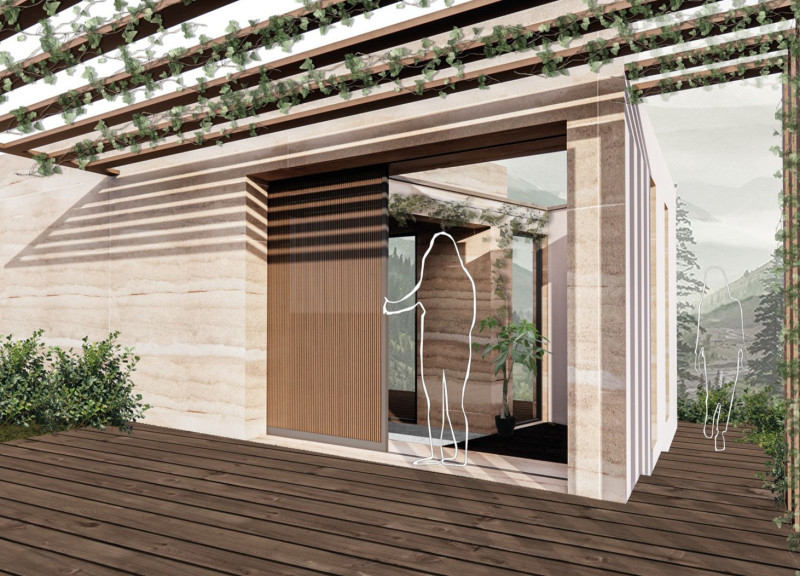5 key facts about this project
Vale de Alma is an architectural retreat situated in the forested foothills of Serra da Estrela, designed as a space for yoga and meditation. This cabin promotes personal reflection and encourages a connection with nature. Its layout allows visitors to move freely between different areas, creating an environment that supports both introspective practices and engagement with the outdoors.
Architectural Concept
The design focuses on the balance between looking inwards and engaging with the surrounding environment. Operable partitions form flexible boundaries, allowing users to arrange spaces according to their needs for privacy or openness. This adaptability enriches the experience, giving individuals control over how they interact with both the cabin and the landscape.
Materials and Performance
Rammed earth is the primary structural material, selected for its thermal mass and ability to work within passive solar design. It helps maintain comfortable indoor temperatures throughout the year. Large south-facing windows bring in natural light while minimizing energy loss. Low-emissivity double-paned glazing complements this by enabling light entry without excessive heat transfer, making the interior environment more pleasant.
Sustainability Measures
The project includes a green roof that collects rainwater for irrigation. This not only contributes to sustainability but also enhances the connection to the natural cycle. Photovoltaic panels are integrated into the building, providing renewable energy and reducing reliance on external sources. These features align with the goal of fostering ecological responsibility while ensuring the retreat remains functional and efficient.
Design Aesthetics
Vale de Alma displays a form of contemporary minimalism that connects with its local context. The design incorporates elements from traditional Portuguese architecture while maintaining a modern feel. This connection to tradition is evident in the way the space feels tactile and inviting.
Striations in the rammed earth walls give the interior a distinctive texture, offering a sensory experience that links the occupant to the landscape outside. This thoughtful integration encourages exploration and highlights the relationship between the cabin and its natural surroundings.






















































